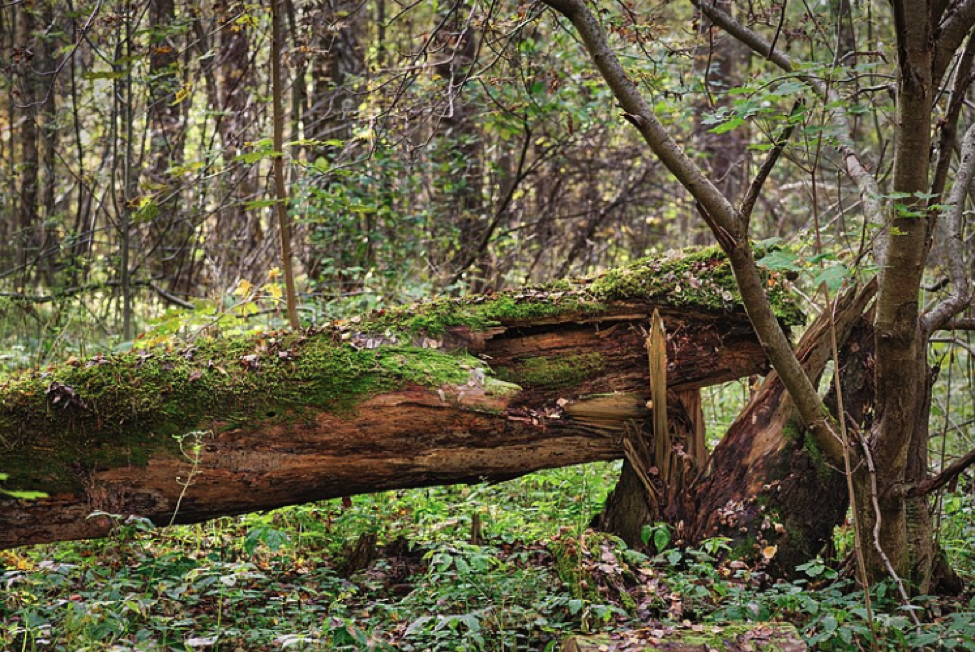On neat, manicured lawns, any stray dandelion or pile of leaves is quickly removed for the sake of appearances. In the woods, it’s a different story. When a willow tree fell on our Russell-Mandel Preserve in Buckingham Township (which is the site for our Farm to Table dinner at the end of July!), our conservation stewards knew better than to clean up the natural debris.
“A fallen tree, whether on land or in water, is a magnet for wildlife,” says Jim Drennan, Heritage Conservancy’s Land Conservation Manager. “They are drawn to it in search of shelter and food sources.”
In short, it’s less about tidiness and more about ecological function. Whether the tree falls due to rough weather or rot, the result is actually beneficial to the surrounding environment. Small animals can take shelter in or beneath the woody structure; deer can nibble on the remaining leaves on the branches; and, as a grand finale, the decomposing organic material will enrich the ground beneath it as fungus moves in to break it down.
“When examining the natural world, a fallen tree is a great place to start. You can find detritivores, small mammals nesting underneath, salamanders navigating their way through the inside, and much more,” says Nina Valentin, Heritage Conservancy’s Conservation Steward. “If you could crack the log open you would find a miniature metropolis of organized creatures.”
So if you’re on a hike and happen to see a fallen tree on the ground, take a moment to examine the soft, nutrient-rich woody pulp that’s settling into the soil, or the holes drilled into the bark from woodpeckers feeding on burrowing insects. You might even catch a glimpse of a mouse or chipmunk diving for cover in the hollowed out trunk. It just goes to prove that the value of a tree lasts even after it’s no longer standing!
